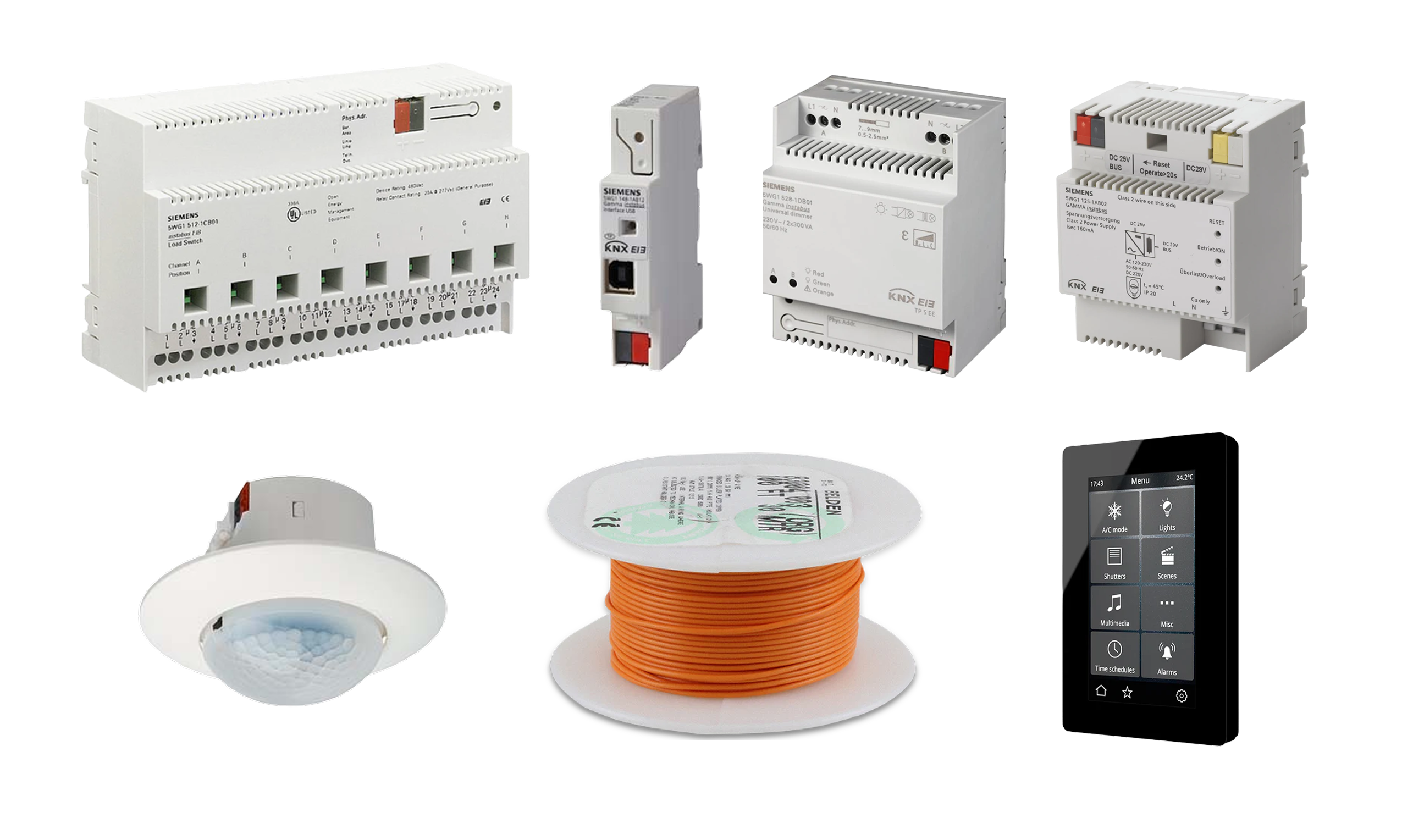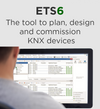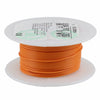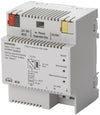- Your one stop shop for KNX devices in the USA 🇺🇸
- (+1) 786 956 6821
- support@knxsupply.com
- Store Location
- Sign in or Register
- Home
-
Categories
- System Devices
- Switching/Shutter Actuators
- Dimming Actuators
- HVAC
- Binary Inputs
- Keypads
- Gateways
- Enclosures and Boxes
- Occupancy Sensors
- Visualization Systems and Touch Panels
- Weather Sensors
- Drivers and ECGs
- Special Sensors
- HVAC
- Accessories
- Cable
- Expert Picks
- KNX Certified Training
- Newest Products
- Best Selling Products
Brands
- Articles
- Contact Us
- Home
- All Collections
- Products
Products
Control unit for KNX-based home and building automation installations, featuring
a 7” TFT capacitive touch screen, integrated web server, and video door phone function.
GLASS (full glass front) and CLASSIC (interchangeable front frames) models available.
Control unit for KNX-based home and building automation installations, featuring a 7” TFT capacitive touch screen, integrated web server, and video door phone function.
GLASS (full glass front) and CLASSIC (interchangeable front frames) models available.
Control unit for KNX-based home and building automation installations, featurin a 7” TFT capacitive touch screen, integrated web server, and video door phone function.
GLASS (full glass front) and CLASSIC (interchangeable front frames) models available.
Control unit for KNX-based home and building automation installations, featuring a 10,1” TFT capacitive touch screen with IPS technology, integrated web server, and video door phone function.
GLASS (full glass front) and CLASSIC (interchangeable front frames) models available.
Control unit for KNX-based home and building automation installations, featuring a 10,1” TFT capacitive touch screen with IPS technology, integrated web server, and video door phone function.
GLASS (full glass front) and CLASSIC (interchangeable front frames) models available.
Control unit for KNX-based home and building automation installations, featuring a 10,1” TFT capacitive touch screen with IPS technology, integrated web server, and video door phone function.
GLASS (full glass front) and CLASSIC (interchangeable front frames) models available.
Control unit for KNX-based home and building automation installations, featuring a 10,1” TFT capacitive touch screen with IPS technology, integrated web server, and video door phone function.
GLASS (full glass front) and CLASSIC (interchangeable front frames) models available.
Control unit for KNX-based home and building automation installations, featuring a 10,1” TFT capacitive touch screen with IPS technology, integrated web server, and video door phone function.
GLASS (full glass front) and CLASSIC (interchangeable front frames) models available.
Enclosure in desktop version with external network cable – hardware-software solution for network management.
As the heart of a building automation project, DIVUS HEARTBEAT ensures security as well as stability and enables easy network setup and maintenance.
- Integrated VoIP server;
- VoIP call logging;
- Three pre-configured and physically separated networks: DIVUS HOME, SECURE and INTERCOM;
- Firewall protection of the HOME and SECURE networks from the external INTERCOM network;
- DHCP and NTP server for the SECURE intranet;
- Automated email reports;
- Network scanning and diagnostic software with reporting;
- Automatic creation of network topology diagrams;
- Advanced information retrieval from connected DIVUS units;
- Remote DIVUS-Support
- HEARTBEAT Manager Slim quantity
- Hardware Specifications (AP-1004HA)
- CPU: Intel Celeron
- Memory: 1 x SODIMM slot, supports DDR3L 1066/1333/1600MHz
- Storage: Supports 1 x internal SATA 2.5" HDD and 1 x mSATA slot
- Design: Fanless, low-power design
- Interfaces:
- 1 x VGA 1 x HDMI 2 x USB 2.0 2 x USB 3.0 2 x COM (RS232) 2 x LAN 1 x AUDIO
- Expansion: Supports 1 x MINI-PCIe slot
- Home Assistant pre installed
KNX Supply
Home Assistant Yellow Server with Raspberry Pi CM4, Home Assistant installed, KNX compatible
INCLUDING:
- Home Assistant Yellow
- Carrier board (No PoE Capabilities)
- Custom enclosure
- Power supply
- Heatsink
- Fixings
- Ethernet cable
- Home Assistant stickers 😀
HOME:
- RPi CM4 2GB/8GB/No WiFi BT (Home Assistant Installed)
- 128GB NVMe (SiliconPower)
PRO:
- RPi CM4 8GB/32GB/No WiFi BT (Home Assistant Installed)
- 1TB NVMe (SiliconPower)
Full control of the smart home, without wall-mounted touch panels
Iddero Home Server 3 is a compact home server for control and monitoring of KNX installations.
It combines advanced functionality with a powerful, intuitive visualisation.
Control from smartphones and tablets is possible using the Iddero Mobile app (iOS / Android).
A build-in web-based user interface also allows access from any device running a standard web browser. Both direct (LAN) connection and secure cloud-based operation are supported; no additional configuration required.
The VERSO+IP 2 and VERSOINDOOR modelsfeature an Ethernet connector, and support remote control from smartphones and tablets through the Iddero Mobile app.
The VERSO INDOOR model also doubles as an indoor video door phone monitor, and supports IP camera visualisation.
This document uses “Iddero Verso” to collectively refer to all product models, unless stated otherwise.
The VERSO+IP 2 and VERSOINDOOR modelsfeature an Ethernet connector, and support remote control from smartphones and tablets through the Iddero Mobile app.
The VERSO INDOOR model also doubles as an indoor video door phone monitor, and supports IP camera visualisation.
This document uses “Iddero Verso” to collectively refer to all product models, unless stated otherwise.
Function highlights:
- Up to 96 control functions, organized in 12 configurable pages
- User editable favorites page
- Configurable background images
- Weekly time schedules (up to 96 channels, 4 programs / channel)
- Alarm monitoring (up to 96 alarms) with event log
- Touch gestures: up to 5 quick actions (4 directions + multitouch), even with the display off (power saving mode)
- Internal scene controller
- Two independent thermostats
-Four multi-function inputs, individually configurable as binary or temperature probe inputs
-Built-in temperature sensor
-Real-time clock (RTC) with backup battery
-Integrated KNX bus coupling unit
-Ultra-low power consumption
Function highlights:
- Up to 96 control functions, organized in 12 configurable pages
- User editable favorites page
- Configurable background images
- Weekly time schedules (up to 96 channels, 4 programs / channel)
- Alarm monitoring (up to 96 alarms) with event log
- Touch gestures: up to 5 quick actions (4 directions + multitouch), even with the display off (power saving mode)
- Internal scene controller
- Two independent thermostats
-Four multi-function inputs, individually configurable as binary or temperature probe inputs
-Built-in temperature sensor
-Real-time clock (RTC) with backup battery
-Integrated KNX bus coupling unit
-Ultra-low power consumption
Function highlights:
- Up to 96 control functions, organized in 12 configurable pages
- User editable favorites page
- Configurable background images
- Weekly time schedules (up to 96 channels, 4 programs / channel)
- Alarm monitoring (up to 96 alarms) with event log
- Touch gestures: up to 5 quick actions (4 directions + multitouch), even with the display off (power saving mode)
- Internal scene controller
- Two independent thermostats
-Remote control from smartphones and tablets via mobile apps
-Four multi-function inputs, individually configurable as binary or temperature probe inputs
-Built-in temperature sensor
-Real-time clock (RTC) with backup battery
-Integrated KNX bus coupling unit
-Ultra-low power consumption
Function highlights:
- Up to 96 control functions, organized in 12 configurable pages
- User editable favorites page
- Configurable background images
- Weekly time schedules (up to 96 channels, 4 programs / channel)
- Alarm monitoring (up to 96 alarms) with event log
- Touch gestures: up to 5 quick actions (4 directions + multitouch), even with the display off (power saving mode)
- Internal scene controller
- Two independent thermostats
-Remote control from smartphones and tablets via mobile apps
-Four multi-function inputs, individually configurable as binary or temperature probe inputs
-Built-in temperature sensor
-Real-time clock (RTC) with backup battery
-Integrated KNX bus coupling unit
-Ultra-low power consumption
The device can be installed in portrait or landscape orientation, and supports surface and flush mounting
options.
The device can be installed in portrait or landscape orientation, and supports surface and flush mounting
options.






















































